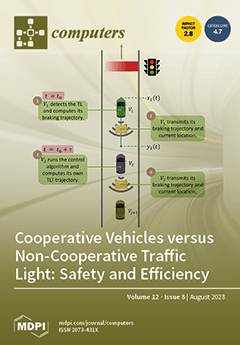Artificial intelligence (AI) has become a cornerstone of modern technology, revolutionizing industries from healthcare to finance. Convolutional neural networks (CNNs) are a subset of AI that have emerged as a powerful tool for various tasks including image recognition, speech recognition, natural language processing
[...] Read more.
Artificial intelligence (AI) has become a cornerstone of modern technology, revolutionizing industries from healthcare to finance. Convolutional neural networks (CNNs) are a subset of AI that have emerged as a powerful tool for various tasks including image recognition, speech recognition, natural language processing (NLP), and even in the field of genomics, where they have been utilized to classify DNA sequences. This paper provides a comprehensive overview of CNNs and their applications in image recognition tasks. It first introduces the fundamentals of CNNs, including the layers of CNNs, convolution operation (Conv_Op), Feat_Maps, activation functions (Activ_Func), and training methods. It then discusses several popular CNN architectures such as LeNet, AlexNet, VGG, ResNet, and InceptionNet, and compares their performance. It also examines when to use CNNs, their advantages and limitations, and provides recommendations for developers and data scientists, including preprocessing the data, choosing appropriate hyperparameters (Hyper_Param), and evaluating model performance. It further explores the existing platforms and libraries for CNNs such as TensorFlow, Keras, PyTorch, Caffe, and MXNet, and compares their features and functionalities. Moreover, it estimates the cost of using CNNs and discusses potential cost-saving strategies. Finally, it reviews recent developments in CNNs, including attention mechanisms, capsule networks, transfer learning, adversarial training, quantization and compression, and enhancing the reliability and efficiency of CNNs through formal methods. The paper is concluded by summarizing the key takeaways and discussing the future directions of CNN research and development.
Full article





